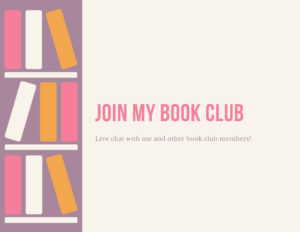10 Tips for Aspiring Authors by Chantel Simmons
10 Tips for Aspiring Authors
1. Only you can write your book. Writing is a job, and you’re not going to make a living at being a writer unless you treat it like a job. You could watch TV, go to a movie, or go for manicures with your best friend. There’s always going to be something else you could do instead of writing, and while all those other activities are fun, no one’s going to write your book for you while you’re doing them. So while you’re trying to write your book, try to actually sit down and write.
2. Set goals. Set a deadline to finish writing the book, then set mini-goals, such as “Finish Chapter 5 by the end of the month” or “Write 1,000 words a week.” Then comes the fun part: make a list of rewards and whenever you meet a goal, reward yourself. Go to a movie with a friend or get a manicure. You’ll enjoy it that much more knowing you worked hard for it. And you won’t feel guilty that you should be home writing for those few hours.
3. Practice, practice, practice. It takes 10,000 hours to become good at anything, so if you want to write a good book, then get writing. It takes 30 days to make a habit, so try to write every day, even if it’s only for 10 minutes or 10 words. Eventually, it’ll become a habit and those 10 words will turn into 10 pages. And when you miss a day of writing, you’ll feel so guilty you’ll ensure you don’t miss the next day.
4. Don’t believe in writer’s block. If you’re stuck on a scene, skip it and write the next scene. Chances are, if you aren’t excited to write a scene, it probably won’t be a very good one to read, either, so just move on. If you feel certain there are plot points you needed to get across in that troublesome scene, jot them on a Post-it and stick it to your computer scene. You’ll find another place to work them into the story.
5. Schedule in your writing time. Then stick to it. You wouldn’t miss a doctor’s appointment to make cookies or do the laundry, so don’t skip an hour of writing to do it either.
6. Don’t quit your day job. If you sell the proposal for your book for a million dollars, well, then, sure, ignore my advice and quit your day job. But if you’re working on your first novel and you don’t have an agent, let alone a publisher, keep your day job—or at least do something else that gives your day some structure and brings in some money. Being unemployed and poor can be stressful. And stress isn’t usually one of the key qualities that inspire you to write a good novel.
7. Believe in yourself. No one is going to care as much about your book or your career as a writer as you do. You have to be your own biggest cheerleader. Of course, make sure that all your rah-rah cheering is warranted. Keep trying to get your book published for as long as you believe that it’s the best book you can possibly write. When you stop believing your book is your absolute best work ever, move on. Revise it or start writing a new book. Lots of successful, published writers have unpublished manuscripts sitting in drawers. You won’t be alone so don’t worry about it.
8. Have a plan. I like to plot out each chapter before I start writing. It’s just a few points, but this way, if I don’t feel like writing Chapter 2, I can skip ahead to Chapter 6. If that’s too planned out, try jotting down your opening chapter, your source of conflict, the climax and the closing sentence. If you know those key elements, you’re going to be a lot better off than if you just sit down and write random scenes and then hope they all fit together in the end. There’s a very good chance you’ll end up scrapping half your work. (Of course, there’s nothing wrong with just letting the words flow—it all works toward the 10,000 hours—it just means it will take a lot longer to finish that first book).
9. Ask friends to read your book. Four eyes are better than two. Twenty opinions are better than none. You don’t have to incorporate everybody’s suggestions, but you never know when someone might make a suggestion that you think is a good one—and that will you’re your book that much stronger. And if 10 people have the same negative criticism about a plot point or a character, chances are an editor, an agent or readers might think the same thing. Isn’t it better to get that opinion free when you can still fix the problem than in a rejection letter or in a published book review?
10. Never give up. If every agent ignores you, follow up. If they all reject your book, compile a new list of agents and send the book out again. If every editor passes on your book, revise it and send to new editors. All you need is one person to say yes, so don’t get discouraged about the ones who don’t. Success is 99% hard work and 1% luck. If this is your dream, it’ll be that much sweeter if you have to work hard to realize it.
Chantel Simmons is the bestselling author of two novels – Stuck in Downward Dog and Love Struck. Read Chantel’s blog at www.chantelsimmons.com or tweet with her on twitter.com@chantelsimmons

